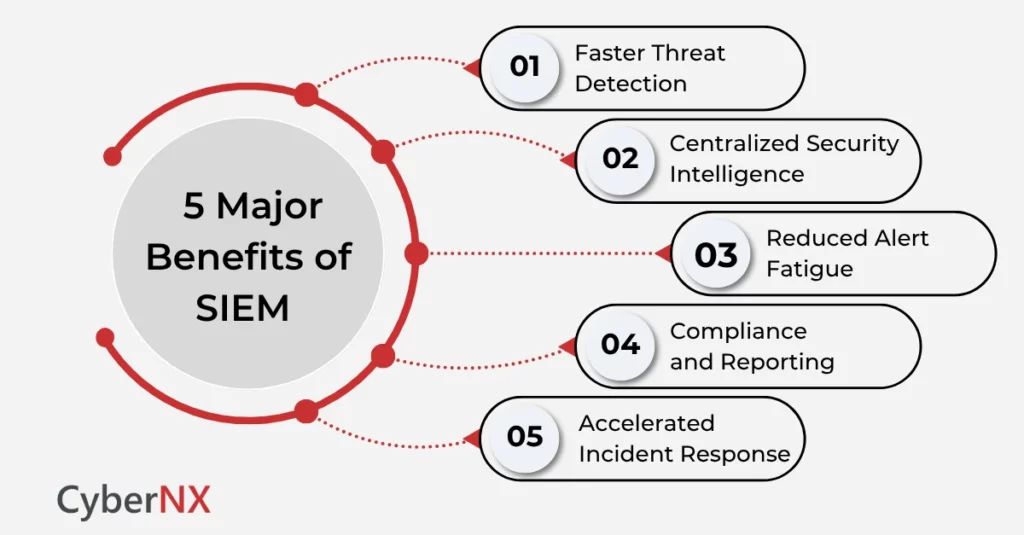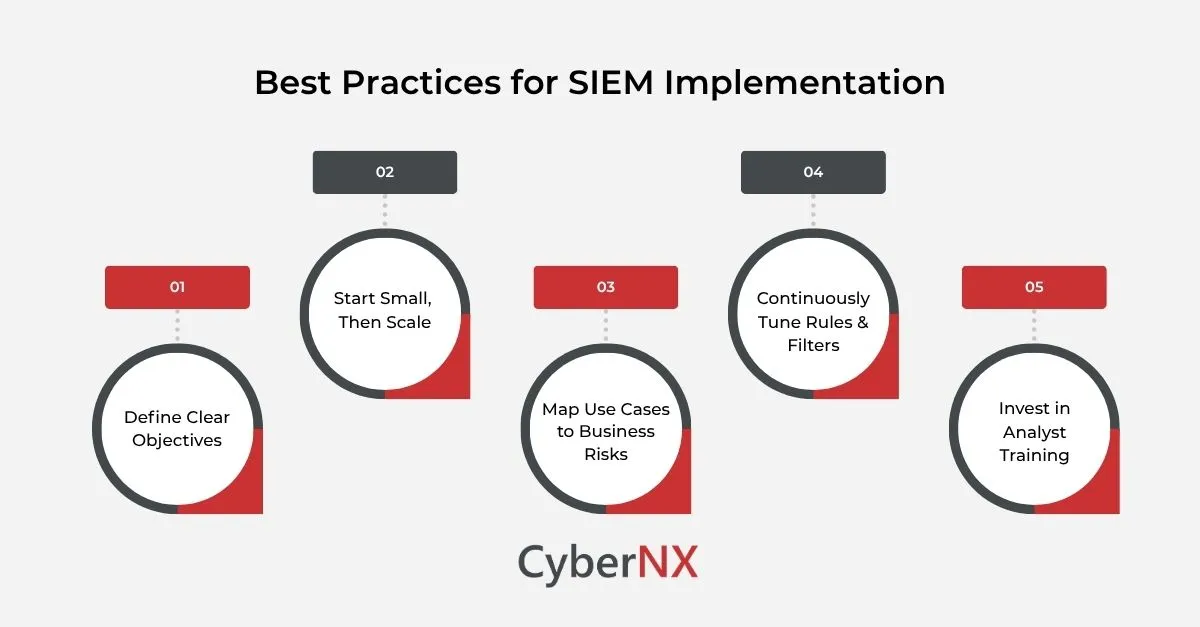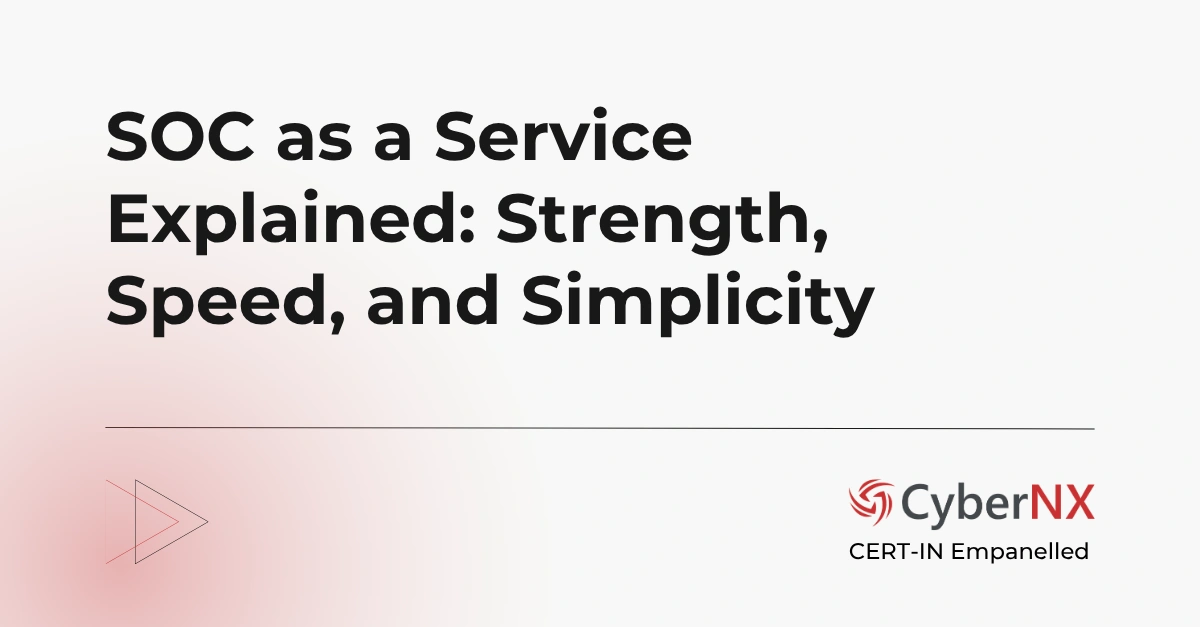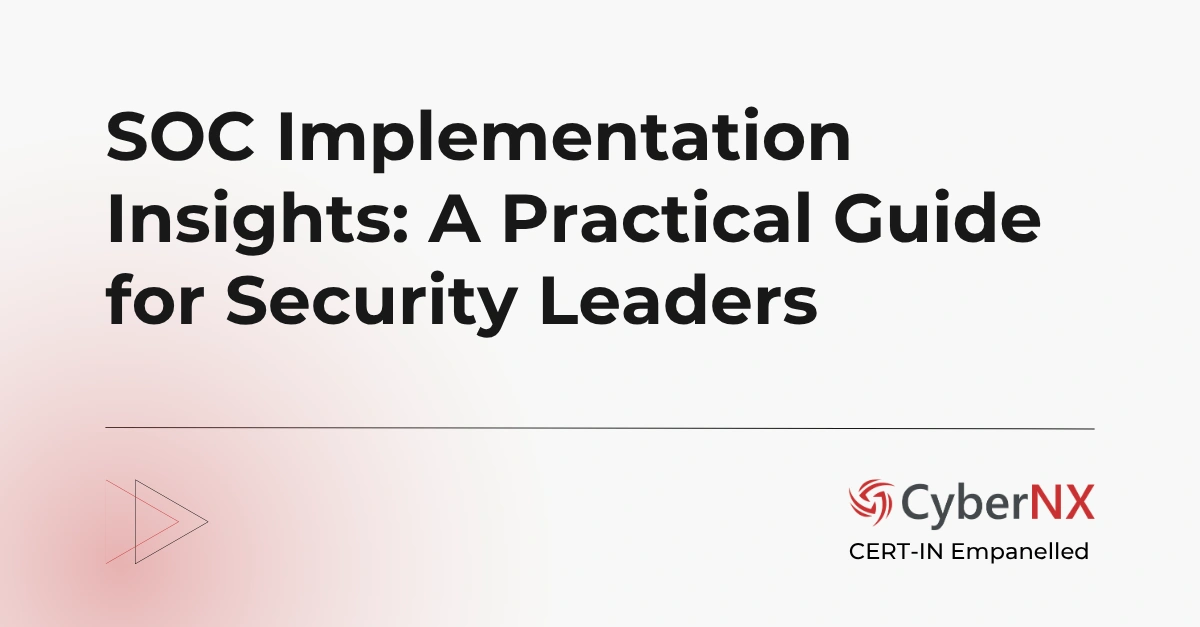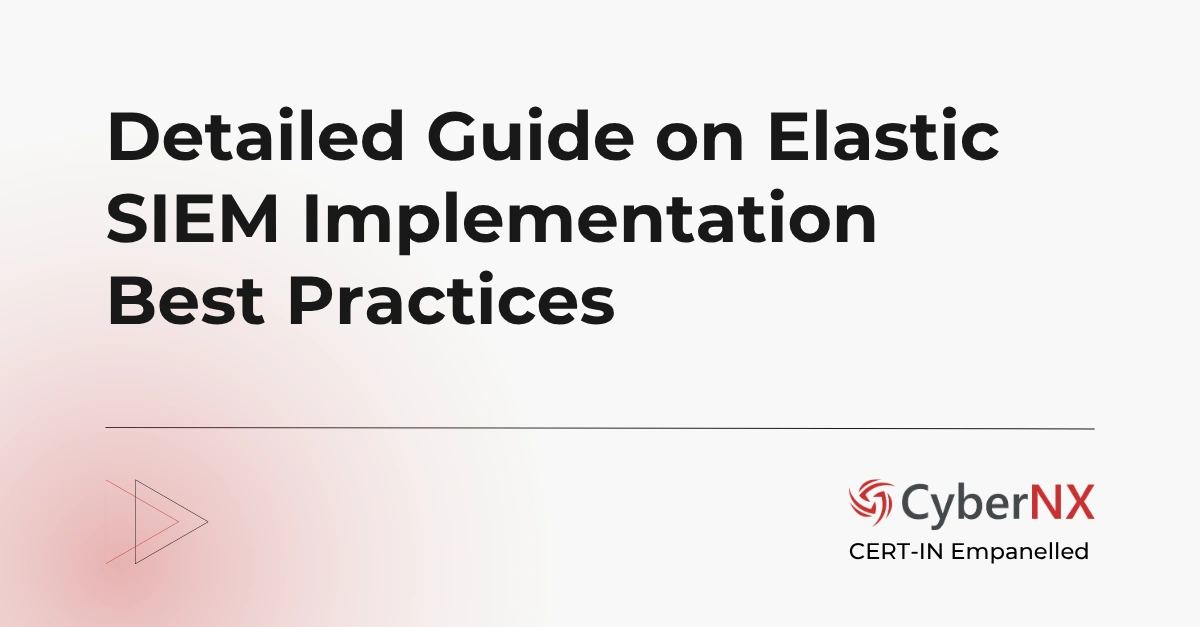The cybersecurity landscape is a maze, where organizations facing modern threats, sophisticated adversaries and massive data noise may get lost. Amidst this complexity, security teams need something useful, something more than just isolated alerts and disconnected log files. What they need is visibility, context and control. This is where Security Information and Event Management (SIEM) steps in.
SIEM security information and event management is a strategic tool in the hands of security professionals. It helps in detecting, analysing and responding to threat, in real time and at scale. As digital transformation accelerates and attack surfaces expand, SIEM continues to evolve from a log management or compliance checkbox to a mission critical capability for proactive cyber defence.
What is Security Information and Event Management?
Before SIEM, there were two separate tools. One was Security Information Management (SIM) dealing with long-term data storage, log analysis and compliance reporting. Other was Security Event Management (SEM) helping with real-time monitoring, correlation and incident response.
As security evolved, Security Information and Event Management (SIEM) tool took birth, merging SIM and SEM into one. The centralized platform today is a holistic approach to security where data is collected, aggregated and analysed from across an organization’s IT infrastructure. Visibility into past security data and real time event monitoring helps in generating alerts for threat detection.
What is a SIEM Tool Used For?
Now that you know Security Information and Event Management, find our what SIEM tool does. Essentially, it gathers logs, events and alerts, forming one coherent intelligence layer. This comprehensive view of security activity solves different challenges, including:
- Threat Detection: Spots anomalies, abnormal behaviours or patterns across endpoints, systems, devices, cloud, and signature-based attacks.
- Incident Response: Provides alert, deeper visibility and actionable data, enabling response teams to fix the problem before it can escalate.
- Compliance Reporting: Generates reports in real time, ensures security policy is enforced and offers relevant data to meet different standards like PCI-DSS, HIPAA, ISO 27001 and GDPR.
- Operational Visibility: Tracks complete activity across the network and provides deep insight, enhancing security team’s performance.
- Centralization of Logs: Unifies logs across cloud, endpoint and on-prem systems, helping in real time threat detection.
In essence, SIEM transforms fragmented security data into actionable intelligence for security teams to take appropriate actions.
So, what could be a SIEM use case?
Security Information and Event Management use case might be hundreds of login attempts at the same time. It can also be an employee trying to access sensitive databases.
Each of the actions mentioned may not raise a red flag. But a SIEM tool will correlate these events in real time, flag the abnormal behaviour as suspicious and trigger an alert or even block access temporarily.
Security Information and Event Management: Key Benefits
SIEM tools today have seen an enormous change, transforming themselves into powerful platforms, delivering strategic advantages to organizations across the globe. Here’s what we mean:
1. Faster Threat Detection
SIEM platforms, if deployed properly, collect signals from the complex IT environments of today. It includes endpoints, networks, cloud platforms and applications. With AI integration and threat intelligence, real time correlation is made possible, uncovering known and hidden threats at speed.
2. Centralized Security Intelligence
SIEM consolidates complete security data and related intelligence into a single, centralized interface or dashboard. The clear and comprehensive security view empower analysts, and they know exactly what’s happening across the digital ecosystem.
3. Reduced Alert Fatigue
Easily one of the biggest benefits of using SIEM is the high-fidelity alerts. What it means is that only the most important incident alerts reach the security teams or SOCs. How is it achieved? With ML-powered automation. It takes out unwanted, low-risk alerts, eventually reducing fatigue and burnout associated with analysts.
4. Compliance and Reporting
Compliance and reporting can feel like a dauting task, a serious challenge for security teams. SIEM helps by providing real time audits and reporting, a boon for regulated industries such as BFSI and healthcare.
5. Accelerated Incident Response
Once integrated with platforms like SOAR, SIEM tools help security teams to accelerate response. It essentially minimizes Mean Time to Respond (MTTR), an important metric while assessing the overall performance of security teams.
How SIEM Tool Works?
SIEM systems work by parsing structured data, normalizing it and triggering responses. Here’s what it involves:
- Data Collection: As part of the first step, SIEM tools ingest logs and SIEM events from across the systems such as servers, applications, identity systems and cloud platforms.
- Normalization: Diverse data formats are standardized to a consistent structure, which is searchable across entire log sources.
- Correlation: According to the predefines correlation rules and use of machine learning and behavioural analytics, SIEM tools identify relationships between events.
- Alerting: As soon as a suspicious, anomalous or out of the normal activity is observed, SIEM triggers alerts with different severity levels.
- Response: SIEM may either auto-isolate threats or escalate them for analyst review.
- Reporting: Dashboards provide clear visibility into everything happening and reports are generated for compliance and strategic insight.
Top SIEM Tools in the Market (2025)
| SIEM Tool | Key Strength | Ideal For |
| IBM QRadar | Advanced threat intelligence & AI analytics | Enterprises needing deep integration with existing security tools |
| Splunk Enterprise Security | Powerful data search and visualization | Large organizations with complex data environments |
| Microsoft Sentinel | Cloud-native, integrates well with Azure & M365 | Businesses leveraging Microsoft stack |
| Exabeam Fusion | Behavioural analytics and automation | Teams focused on insider threat detection |
| Palo Alto Cortex XSIAM | XDR + SIEM + SOAR in one platform | Autonomous SOCs aiming for complete integration |
These tools are built with different design philosophies, ranging from AI-centric detection to unified response. It allows organizations to choose a SIEM tool based on their security maturity and technology stack. We unpack it all in more detail in our blog SIEM Tools.
Key Components of a SIEM System
Here are the key components of a Security Information and Event Management System explained in detail:
1. Log Collection and Ingestion
Remember, SIEM was invented with the ability to manage logs. With upgrades, SIEM can now aggregate logs from different sources such as firewalls, endpoint protection tools, cloud environments, identity providers and databases. Agents and APIs facilitate real time data collection and enables scalable ingestion across the infrastructure.
2. Normalization and Parsing
Here, it is important to know that raw logs arrive in countless, disparate formats. SIEM engines parse and normalize them into a standardized, unified schema. This helps in correlating and analysing different events in the right context.
3. Correlation Engine
Regarded as the brain of the SIEM, it applies analytics, rule sets, behaviour baselines and sometimes machine learning models to find suspicious chains of events across multiple systems.
4. Alerting and Incident Prioritization
Once threats are detected, SIEM systems generate alerts with contextual metadata. It can be originating source, impacted assets or severity level. Risk scoring is now very much part of the process to help analysts prioritize alert investigations.
5. Dashboards and Visualization
Interactive dashboards display key metrics such as intrusion attempts, threat trends and user access anomalies. The visually enriched data enable SOC teams to monitor, understand and spot anomalies immediately.
6. Threat Intelligence Integration
Modern SIEMs ingest external threat intelligence like Indicators of Compromise IOCs and vulnerabilities CVEs, boosting detection capabilities. It helps in finding known malware signatures or attacker infrastructure in a quick time.
Types of SIEM
There are 3 types of SIEM, which are discussed briefly below:
- Traditional SIEMs: These work on-premises and are rule-based and involve pretty log-heavy platforms.
- Next-Gen SIEMs: Cloud-native, these platforms are ML-powered, support UEBA and real-time threat detection.
- SIEM-as-a-Service (Cloud SIEM): Latest upgrade in the market, this SIEM type is managed and maintained by vendors. It is ideal for businesses with limited internal security expertise.
Best Practices for SIEM Implementation
Before your organization deploys Security Information and Event Management, you must know these best practices:
1. Define Clear Objectives
Always understand what you are aiming to achieve by implementing SIEM into your security program. The threats you are most concerned with, the compliance needs, threat detection, or all of them. This will shape configuration, use cases and priorities.
2. Start Small, Then Scale
Define, design and apply correlation rules first across critical log sources like active directory, firewalls and endpoints initially. See how it works and helps your security. Then, expand to cover networks, clouds etc., as rules mature and analysts get comfortable.
3. Map Use Cases to Business Risks
The predefined detection rules that you create must be aligned with real business threats. This can be sensitive data access, IP theft, fraud or service disruption. Whatever it is, make sure to identify it early and before setting up SIEM.
4. Continuously Tune Rules & Filters
Refine, tune and update correlation rules, thresholds and false-positive filters based on actual incidents. How will it help? Well, it will eliminate unwanted and low-risk alerts and reduce fatigue and burnout associated with it.
5. Invest in Analyst Training
Training and upskilling your security team in log analysis, threat hunting and rule writing is imperative to handle SIEM functionalities properly and extract the most out of it.
SIEM vs Other Tools – SOAR, XDR & EDR
SIEM sometimes can get confused with other security tools used in SOC. Here’s how they differ:
| Tool | Focus | Relationship with SIEM |
| SOAR (Security Orchestration, Automation, and Response) | Automates response workflows | Often integrates with SIEM to take automated action on alerts |
| XDR (Extended Detection and Response) | Correlates data across endpoints, email, cloud, and more | XDR may replace or supplement SIEM in some orgs, offering unified detection |
| EDR (Endpoint Detection and Response) | Focuses on endpoint behaviour | Can feed data into SIEM for broader context |
IT security leaders can get confused between SOAR and SIEM acronyms in the context of cybersecurity and their relevance. We explore both tools and their differences in our blog SOAR vs SIEM.
Emerging Trends and Future of SIEM
SIEM has indeed come a long way from its log-centric roots. Any experienced security expert will tell you that. So, what does the next generation holds for SIEMs:
- AI and ML Integration: Without a doubt, AI integration will transform SIEM functions. It includes adaptive anomaly detection and predictive analytics replacing static rules.
- Cloud-Native Architectures: Another possible evolution of SIEM solutions will see scalability, elasticity and lower maintenance overhead for organizations.
- Open Integrations & APIs: This is certainly something to watch out for in the future. Open integration and APIs enabling ecosystem connectivity across IT and OT environments.
- Decentralized Data Processing: Experts also opine this major change will take SIEM to next level where edge processing and federated analytics will handle data sovereignty and latency issues.
SIEM will become autonomous and intelligent, even more so. It will also be embedded across the digital ecosystem, from IT now to IoT and OT environments.
Conclusion
Security Information and Event Management has always been a foundational element of modern cybersecurity strategy. SIEM’s ability to offer visibility, context and control is critical for protecting organization and other entities from sophisticated and stealthy cyberattacks.
Our SIEM Consulting Services will help you gain deep visibility to the data, boost response time and help you meet compliance requirements. Contact us today!
Security Information and Event Management FAQs
How can SIEM support zero trust architecture in modern enterprises?
SIEM plays a critical role in implementing and maintaining a Zero Trust model by continuously monitoring user behaviour, validating device trust, and correlating identity-based events. It helps enforce the “never trust, always verify” principle by flagging anomalies like sudden access to sensitive data or lateral movement attempts. Integrating SIEM with identity and access management (IAM) tools further strengthens visibility and adaptive access control.
What are hidden costs to consider when deploying a SIEM solution?
Beyond licensing and storage, hidden costs may include skilled manpower for rule tuning, infrastructure upgrades, false-positive triaging, and long-term data retention. Also, if a SIEM platform charges based on ingested data volume, excessive log generation can unexpectedly inflate monthly costs. Carefully evaluating pricing models and optimizing log sources can prevent budget shocks.
How does SIEM contribute to proactive threat hunting?
SIEM enables threat hunting by providing a centralized platform to search and pivot across historical logs, behavioural patterns, and event correlations. Advanced SIEMs with built-in analytics and threat intelligence allow analysts to proactively query for known Indicators of Compromise (IOCs) and uncover dormant or stealthy attackers before any alert is triggered.
Can SIEM tools detect threats in encrypted traffic?
While SIEMs don’t decrypt traffic themselves, they can ingest metadata from SSL/TLS inspection tools, firewalls, or proxies that do. Even without full decryption, SIEMs can spot suspicious patterns in encrypted sessions – such as abnormal data volumes, traffic to rare IPs, or certificate anomalies – which can indicate exfiltration or command-and-control activity.


